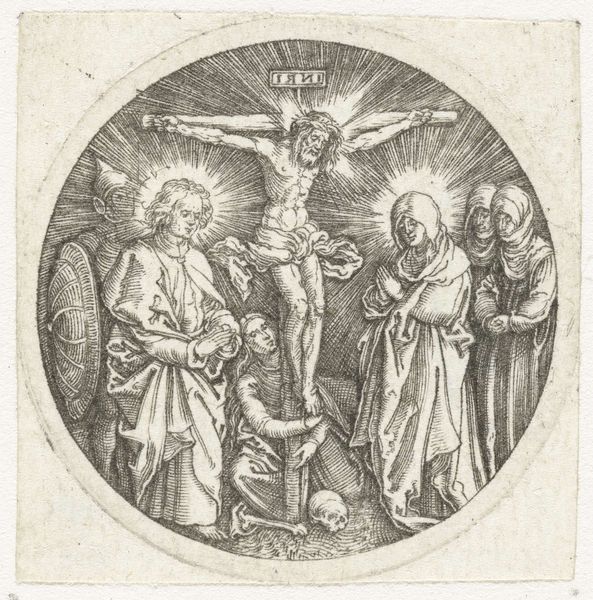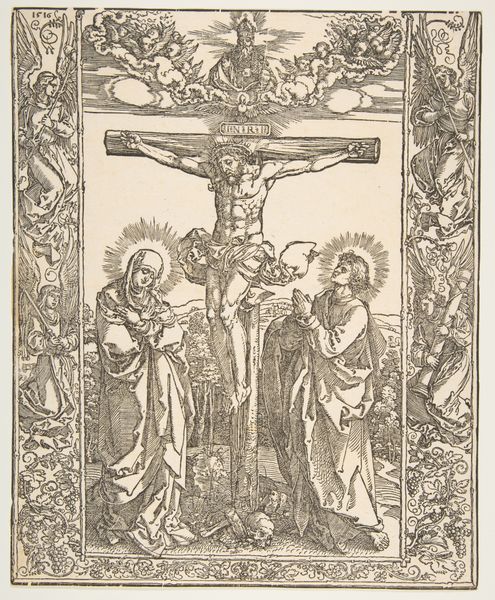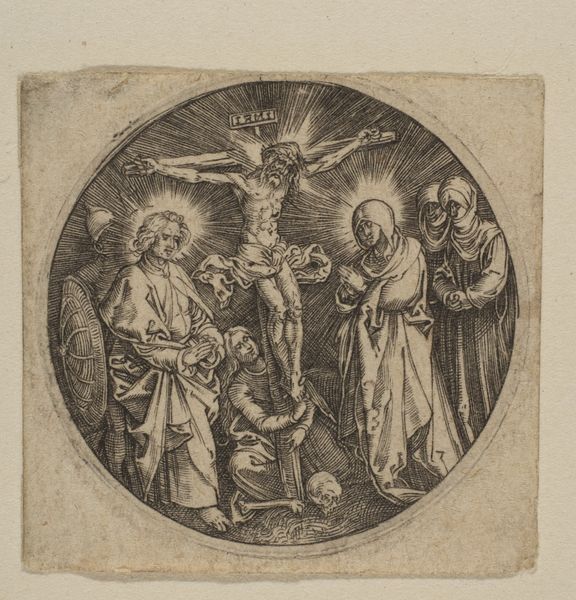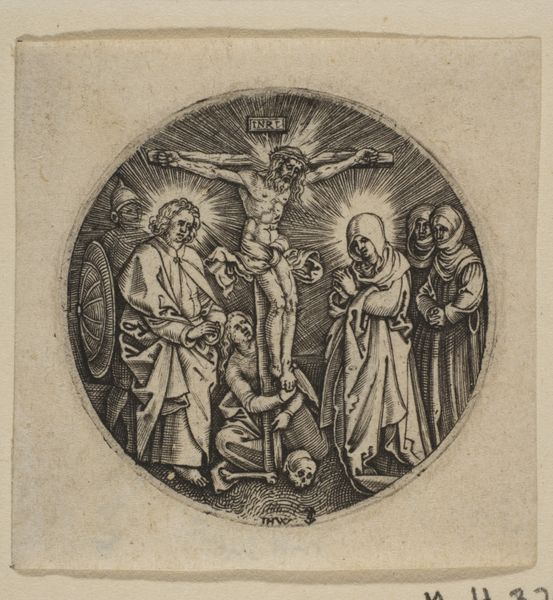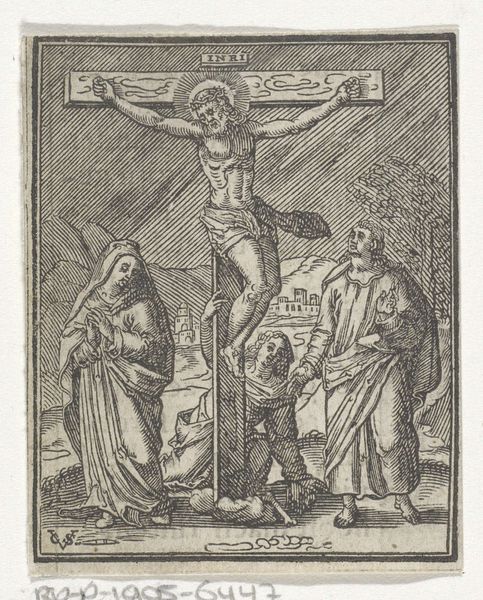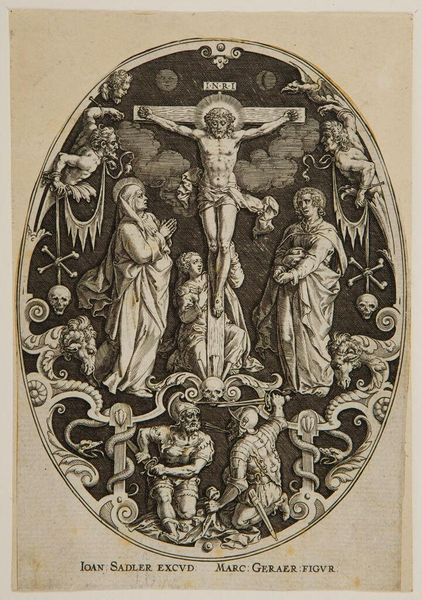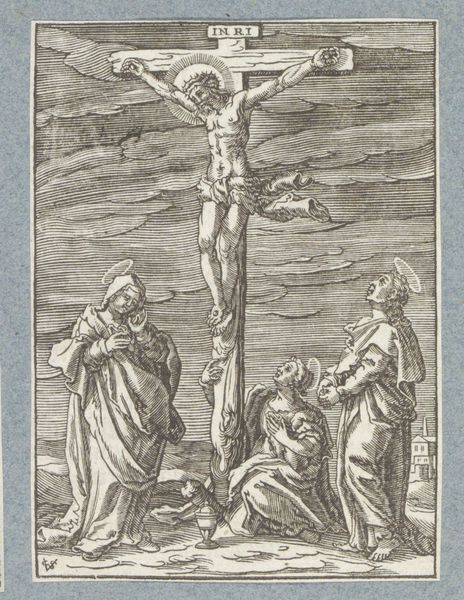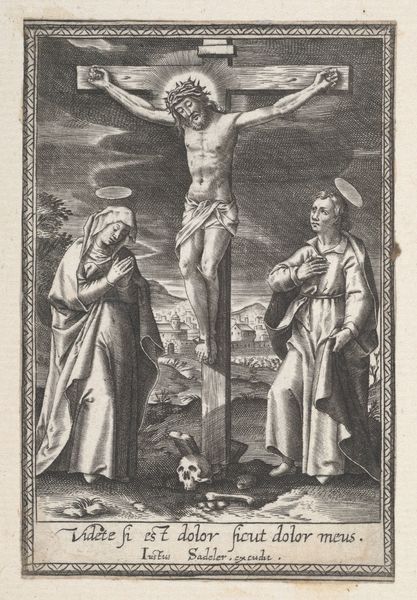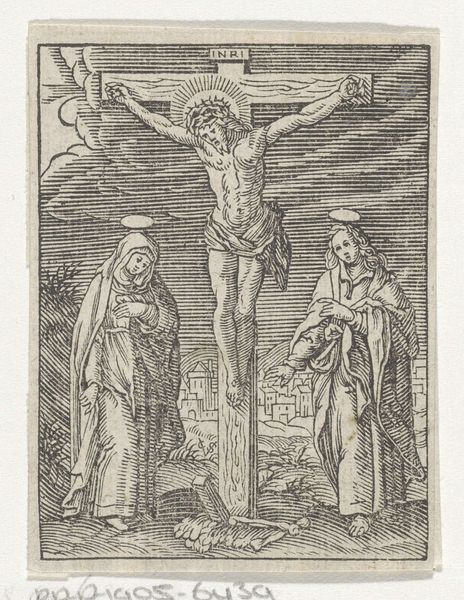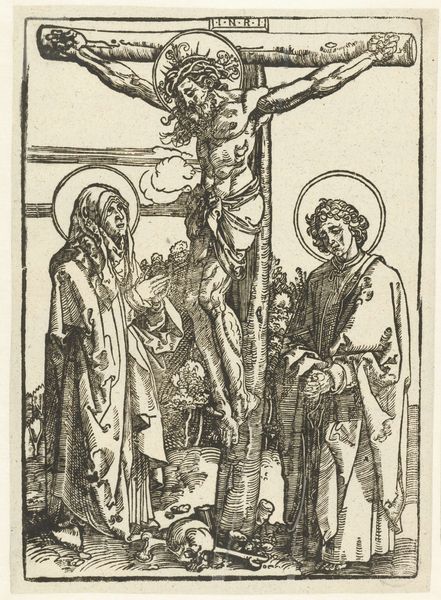
print, engraving
#
portrait
# print
#
figuration
#
jesus-christ
#
black and white theme
#
black and white
#
christianity
#
crucifixion
#
history-painting
#
northern-renaissance
#
engraving
#
virgin-mary
#
christ
Copyright: Public domain
Curator: Immediately, the starkness is striking. The entire scene seems to erupt from the darkness. Editor: We’re looking at Albrecht Durer's "Crucifixion," an engraving created in 1519. Currently, it resides in a private collection, giving us a rather rare glimpse. I find myself drawn to the roundel format and intricate detail given the challenging medium. Curator: It's interesting, isn’t it, how Dürer packs so much emotion into a small space? The circle itself lends a feeling of totality, of inescapable fate. Even the background, formed with dense engraved lines, feels heavy and pressing. This scene, in all its terrible beauty, seems sealed. I see repeated symbolism. Editor: The imagery, of course, draws heavily from Christian tradition. The suffering Christ dominates the center. The skull at the foot of the cross is there as a stark reminder of death. It echoes images used in plague art across the European continent. You feel the tension of religious and social life? Curator: Precisely. And even more specifically it is not simply any death, but Adam's skull that lies beneath Christ’s feet. According to Christian thought, the sacrifice on the cross offers salvation from Adam’s original sin and resulting mortality. It reflects humanity in need. The circular form then amplifies how this moment carries generational salvation that ripples in a closed loop across time. Editor: The figures surrounding Christ are also meticulously rendered, aren't they? We see the Virgin Mary, grief-stricken, alongside other figures traditionally associated with the crucifixion narrative. And on the left we have what looks like the Apostle John. Curator: Consider Mary. The subtle modeling of the cloak does two things. Her sorrow reads powerfully, yet it is familiar as this depiction comes to represent the universal Mother figure. Editor: Indeed. Durer successfully navigates the tension between portraying a specific biblical event and creating a work resonant with wider societal concerns regarding religious, social, and even political matters. It becomes, in many ways, an intersection of sacred history and the everyday reality of its contemporary audiences. Curator: A profound observation. The power of these symbols still resonate today. Editor: Dürer’s technical skill, coupled with potent imagery, results in an enduring depiction. The weight of history is evident.
Comments
No comments
Be the first to comment and join the conversation on the ultimate creative platform.

